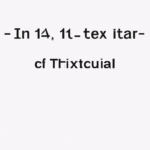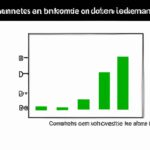The Calculation of Theil Index is a statistical measure used to quantify inequality within a given population or dataset. Developed by econometrician Henri Theil, it provides a comprehensive analysis of inequality by taking into account both within-group and between-group disparities. The Theil Index is calculated by considering the logarithmic differences between individual values and the overall average. The resulting index ranges from 0 to 1, with higher values indicating greater inequality. This method allows policymakers and researchers to evaluate the distribution of income, wealth, or any other relevant variable, making it a valuable tool for understanding and addressing societal disparities.
(Theil Index)
The Theil index is a measure of inequality used in various fields such as economics, sociology, and demography. It quantifies the extent of inequality within a given population or distribution. The calculation method of the Theil index involves three key steps. Firstly, the Theil index requires data on the distribution of a variable of interest across different subgroups or individuals in a population. This variable can be income, wealth, or any other factor that can be measured and divided into categories. Each category represents a specific subgroup or individual within the population. Secondly, the Theil index calculates the relative inequality within each subgroup and the overall population. This is done by comparing the average value of the variable within each subgroup to the average value across the entire population. The relative inequality within each subgroup is determined by dividing the average value of the variable within the subgroup by the overall average value. This step ensures that the index reflects both within-group and between-group inequality. Finally, the Theil index combines the relative inequality within each subgroup to obtain an overall measure of inequality for the entire population. This is achieved by calculating the entropy of the relative inequality values. Entropy is a measure of the average uncertainty or randomness within a distribution. In the context of the Theil index, it captures the extent of inequality by assessing the dispersion of the relative inequality values across the subgroups. The Theil index is often expressed as a decimal or a percentage. A value of zero indicates perfect equality, meaning that the variable of interest is equally distributed among all subgroups. Higher values of the index indicate increasing levels of inequality within the population. In conclusion, the calculation of the Theil index involves analyzing the distribution of a variable across different subgroups and calculating the relative inequality within each subgroup. These relative inequality values are then combined using a measure of entropy to obtain an overall measure of inequality for the entire population. The Theil index provides valuable insights into the extent of inequality and can inform policymakers, researchers, and practitioners in various fields.Applications of Theil index
The Theil index, a measure of income inequality, has various applications across different fields. In this article, we will explore some of the key applications of the Theil index. In economics, the Theil index is often used to analyze income disparities among different populations or regions. By quantifying inequality, policymakers can better understand the extent and nature of income distribution within a society. This information can then be used to design targeted policies and interventions aimed at reducing income inequality and promoting economic growth. Another significant application of the Theil index is in the analysis of educational disparities. By measuring inequality in access to education and educational outcomes, policymakers can identify gaps in the education system and develop strategies to address them. This includes identifying areas with high concentrations of disadvantaged students or regions that require additional resources to improve educational outcomes. Within the field of healthcare, the Theil index can be used to measure inequalities in access to healthcare services and health outcomes. By examining variations in healthcare utilization, disease prevalence, and mortality rates across different socioeconomic groups or geographic areas, policymakers can identify areas that require additional healthcare resources and interventions. Furthermore, the Theil index can also be applied to understand and analyze patterns of urban development and spatial segregation. By quantifying inequalities in housing prices, access to services, and other indicators of urban development, policymakers can assess the impact of urban planning policies and identify areas that require attention in terms of social integration and inclusive development. In addition to its applications in the social sciences, the Theil index is also used in market research and business analysis. By analyzing inequality in consumer behavior and purchasing power within a market, firms can better understand the needs and preferences of different consumer segments. This information can then be used to design targeted marketing strategies and develop products that cater to different income groups. It is worth noting that the applications of the Theil index are not limited to these examples. The flexibility and versatility of this measure make it applicable to a wide range of fields and disciplines that involve analyzing and understanding inequality. Overall, the Theil index serves as a valuable tool for policymakers, researchers, and analysts in assessing and addressing various forms of inequality. Whether it is income disparities, educational gaps, healthcare inequalities, urban development patterns, or market research, the Theil index provides a useful framework for quantifying, analyzing, and ultimately, working towards reducing inequality and promoting inclusive growth and development.
Calculation formula for Theil index
The calculation formula for the Theil index is a mathematical expression used to determine the level of inequality within a given set of data or among different groups. It is widely used in various fields, including economics, sociology, and demography, to measure disparities and distributional patterns. The Theil index, also known as the entropy index, provides a quantitative measure of inequality based on the principles of information theory. The Theil index can be calculated using different variations, but the most common formula includes two components: the average entropy and the inherent entropy or information entropy. Let’s delve into each component in detail. The average entropy component refers to the overall average of the shares or proportions of each category within the data set. This component reflects the average inequality within the population or groups being analyzed. To calculate the average entropy, you begin by dividing the value of each category by the sum of all values, resulting in the proportion of each category. Then, you calculate the negative natural logarithm of each proportion and multiply it by the proportion itself. Finally, you sum these values for all categories. The inherent entropy component quantifies the potential inequality that could arise if the proportions of each category were distributed evenly. This component represents the maximum possible level of inequality. To calculate the inherent entropy, you first determine the natural logarithm of the number of categories. Then, you multiply this value by the sum of all proportions divided by the number of categories. The Theil index is obtained by dividing the average entropy by the inherent entropy. This ratio captures the extent of inequality within a given dataset or among different groups. A Theil index close to zero indicates a high level of equality, while a value closer to one signifies a high level of inequality. It is important to note that the interpretation of the Theil index depends on the context and the specific data being analyzed. It provides a relative measure of inequality rather than an absolute value. Furthermore, different variations of the formula can be used to suit various research objectives and methodologies. In conclusion, the calculation formula for the Theil index is a valuable tool for measuring inequality within data sets or among different groups. By combining the average entropy and the inherent entropy, this formula provides a quantitative estimate of inequality. The Theil index is widely used across disciplines to analyze disparities and distributional patterns, contributing to a better understanding of social, economic, and demographic dynamics.
Definition of Theil index
The Theil index, named after economist Henri Theil, is a measure of inequality or dispersion commonly used in various fields such as economics, sociology, and ecology. It provides a quantitative assessment of the distribution of a particular characteristic or variable within a population or group. The Theil index consists of two components: the within-group inequality and the between-group inequality. The within-group inequality measures the level of disparity among individuals within a specific group, while the between-group inequality captures the differences between various groups. Mathematically, the Theil index can be expressed as the sum of the relative entropy of each subgroup within a population: T = Σ (p_i * ln(p_i / r_i)) where T represents the Theil index, p_i denotes the proportion of the population within each subgroup, and r_i is the average proportion of that subgroup. The definition of the Theil index allows for a comprehensive evaluation of inequality because it considers both the size and proportion of subgroups within a population. By incorporating information from each subgroup, the index provides a more complete representation of the level of inequality within a given context. One of the advantages of the Theil index is its decomposability. This means that the overall inequality can be separated into its between-group and within-group components, allowing for a deeper understanding of the factors driving the observed disparities. This decomposition is particularly useful in policy analysis, as it can help identify which factors contribute most significantly to the overall inequality and guide the implementation of targeted interventions. Another important feature of the Theil index is its ability to handle zero or negative values. This property makes it versatile in various applications, such as income inequality analysis, where zero incomes or negative values may be present in the dataset. By accommodating these situations, the Theil index provides a reliable and robust measure of inequality. In summary, the Theil index is a widely used statistical measure that quantifies inequality by considering both within-group and between-group disparities. Its mathematical formulation allows for a comprehensive assessment of inequality, facilitating policy analysis and informed decision-making. With its decomposability and adaptability to various contexts, the Theil index offers a valuable tool for researchers, policymakers, and organizations seeking to understand and address inequality in a meaningful way.
Interpretation of Theil index
The interpretation of the Theil index plays a crucial role in analyzing income inequality, market concentration, and other distributional disparities. The Theil index measures the inequality between different groups within a population, assessing the relative contribution of each group to the overall inequality. It is widely used in economics, sociology, and other social sciences to understand and evaluate patterns of inequality. When interpreting the Theil index, it is important to keep in mind that higher values indicate greater inequality, while lower values signify more equal distributions. The index ranges from 0 to 1, with 0 suggesting perfect equality and 1 indicating complete inequality. The Theil index allows researchers to measure inequality at various levels—across individuals, sectors, regions, or any other subgroups of a population. The interpretation of the index will depend on the specific application and the context in which it is used. Some common interpretations include: 1. Income inequality: In the case of income distribution, the Theil index can provide insights into the disparity between different income groups. A higher value of the index implies a larger income gap between these groups, while a lower value suggests a more equitable distribution. 2. Market concentration: When examining market concentration, the Theil index can measure the concentration of market share among a few dominant firms. A higher value indicates a more concentrated market, potentially signaling limited competition and possible anti-competitive practices. 3. Regional disparities: By applying the Theil index to regional data, researchers can assess the inequality between different regions in terms of socio-economic indicators, such as income, education, or access to resources. A higher index value highlights significant regional disparities, while a lower value indicates a more balanced distribution across regions. 4. Sectoral analysis: The Theil index can also be used to evaluate inequality within specific economic sectors or industries. This allows researchers to identify sectors that are more or less concentrated, or to assess the disparities in wages, productivity, or other relevant variables. 5. Inequality over time: When measuring inequality over time, the Theil index can track changes and trends. Rising values suggest increasing inequality, while decreasing values imply a more equal distribution of resources or opportunities. In conclusion, the interpretation of the Theil index depends on the specific application and context. It is a versatile measure that can be used to evaluate income inequality, market concentration, regional disparities, and sectoral inequalities. Understanding the interpretation of this index enables researchers and policymakers to gain valuable insights into distributional disparities and take appropriate actions to address them.
Limitations of Theil index
The Theil index is a statistical measure commonly used to analyze income inequality and disparities in various fields. While it is a valuable tool, it also has limitations that need to be considered when interpreting the results. Here are some key limitations of the Theil index: 1. Lack of sensitivity to changes in the middle income groups: The Theil index tends to focus primarily on the extreme ends of the income distribution, namely the rich and the poor. As a result, it may not show significant changes or inequalities within the middle-income groups. This lack of sensitivity could lead to an incomplete understanding of overall income inequality. 2. Dependence on population size: The Theil index is influenced by the size of the population under consideration. If there are significant variations in population size between the groups being compared, it can affect the results. Therefore, caution must be exercised when comparing Theil index values across different populations or regions. 3. Inability to capture other dimensions of inequality: While the Theil index is useful for measuring income inequality, it may not provide a comprehensive view of other dimensions of inequality, such as educational attainment, health outcomes, or access to basic services. It is crucial to consider other indicators alongside the Theil index to develop a more holistic understanding of inequality. 4. Sensitivity to group formation and classification: The Theil index relies on how groups are formed and classified for analysis. Different groupings can yield different results, making it essential to carefully define and justify the chosen criteria. The sensitivity to group formation should be acknowledged to avoid potential biases and misinterpretations. 5. Limited ability to account for changes over time: The Theil index is primarily a snapshot measurement of inequality at a specific time point. It may not accurately capture changes and trends over time. When assessing changes in inequality, it is advisable to track the Theil index over multiple time periods to gain a more comprehensive understanding of the dynamics. 6. Data availability and reliability: A common challenge when working with the Theil index is the availability and reliability of data. In some cases, data may be incomplete, inconsistent, or outdated, which can affect the accuracy and reliability of the results. It is crucial to be aware of the limitations of the data used and discuss potential biases when interpreting the findings. 7. Homogeneity assumption: The Theil index assumes that individuals within a group are homogeneous in terms of income or the variable being measured. However, in reality, there is often significant diversity within groups. Ignoring this diversity can lead to a simplified understanding of inequality and may not accurately reflect the true disparities that exist. It is essential to consider these limitations when using the Theil index to ensure a more nuanced and accurate analysis of income inequality. While it is a valuable tool, it should be complemented with other measures and indicators to gain a comprehensive understanding of inequality in various contexts.













